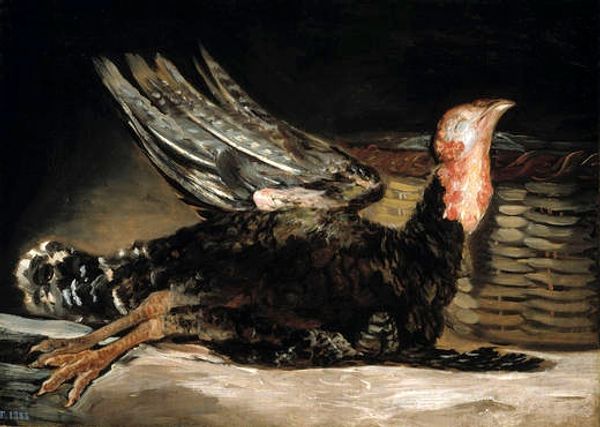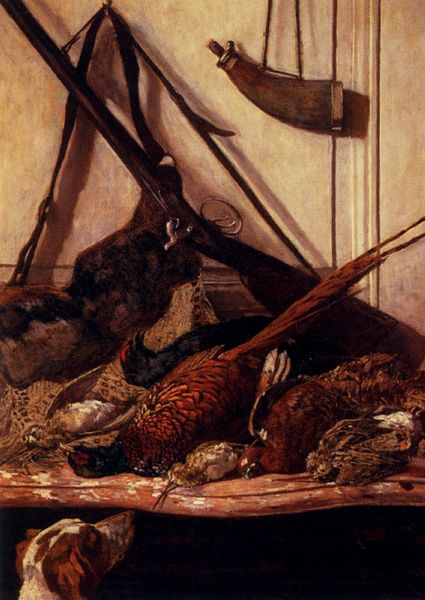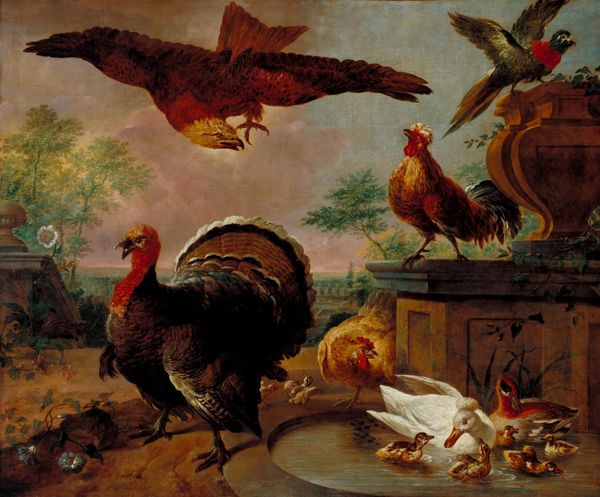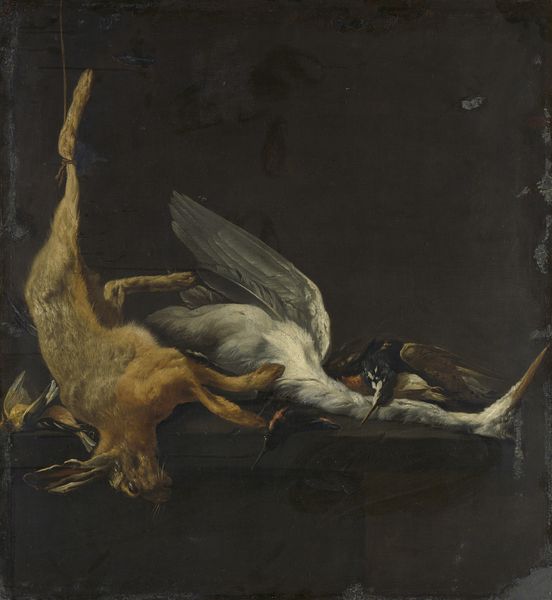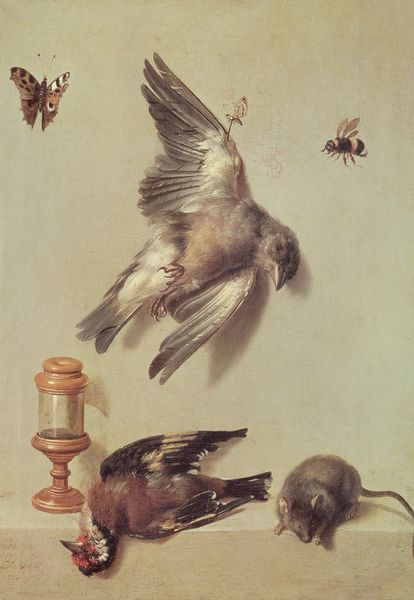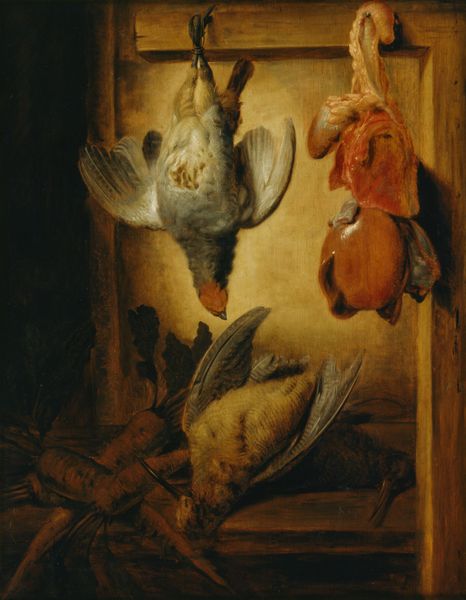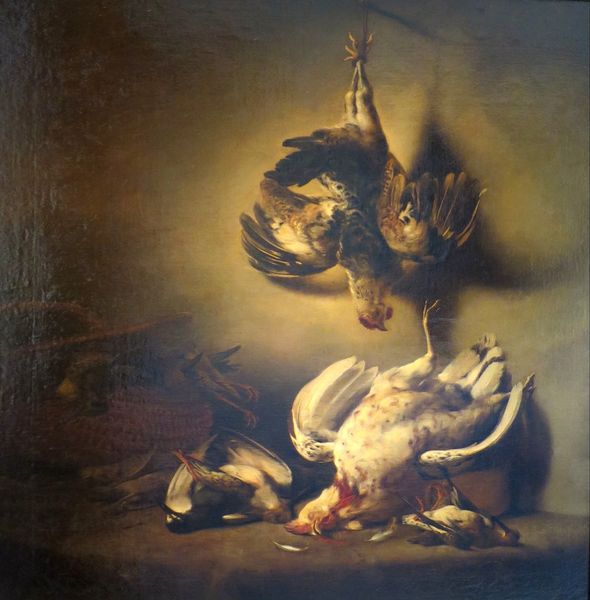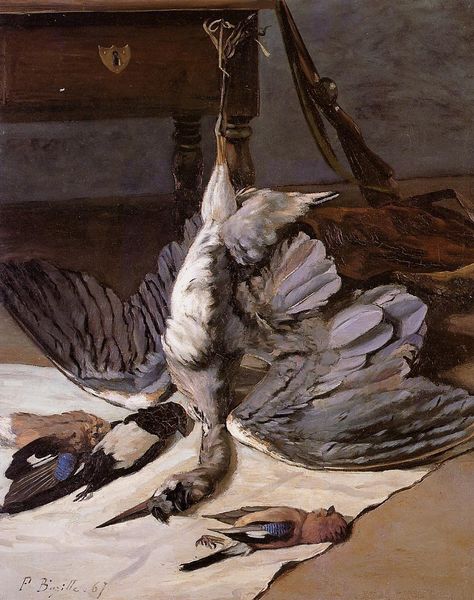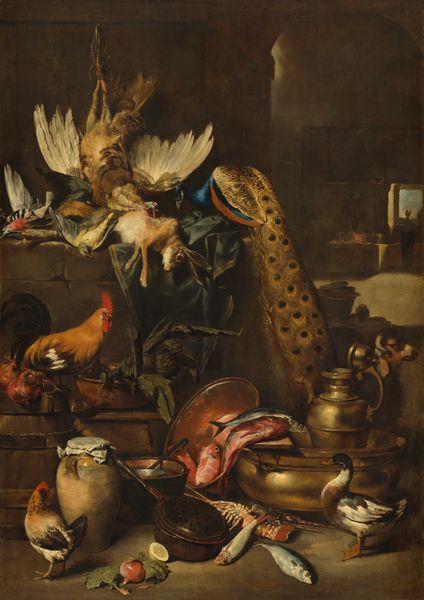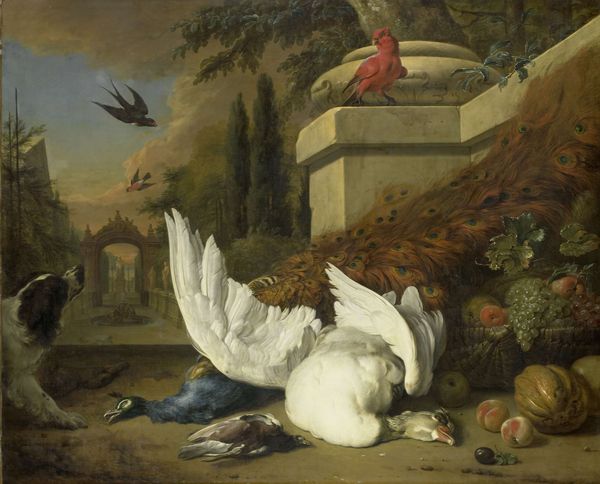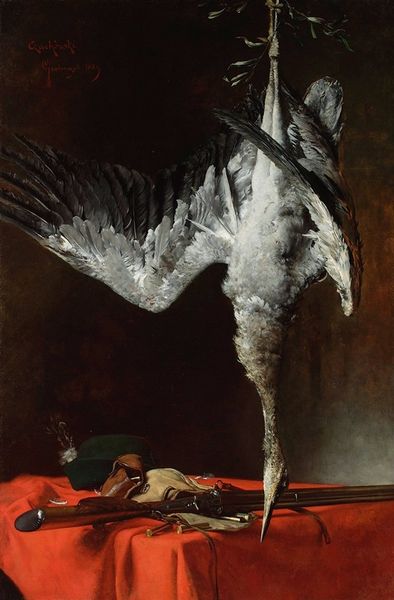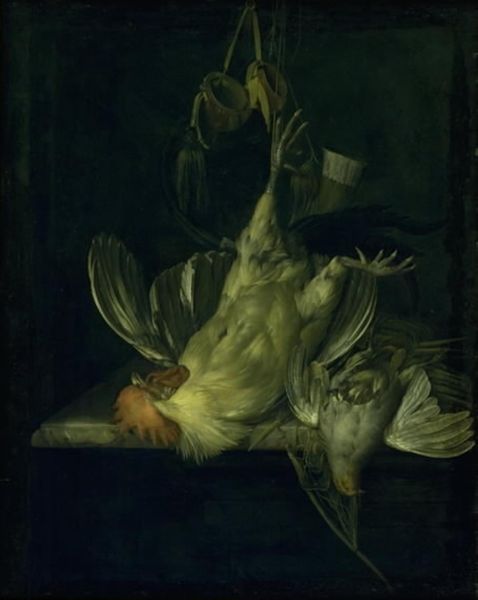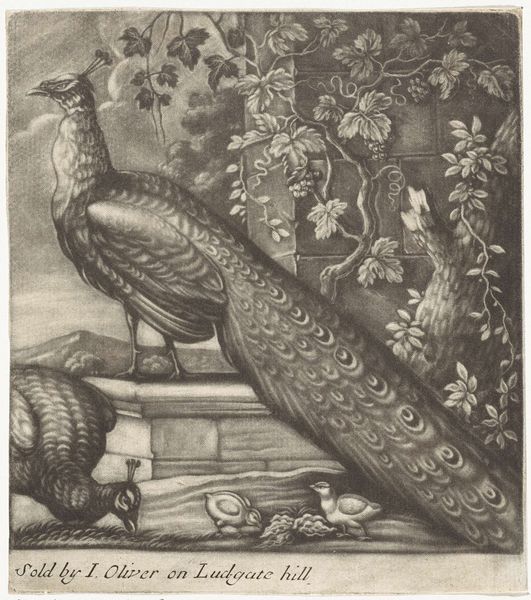
painting, oil-paint
#
baroque
#
painting
#
oil-paint
#
oil painting
Copyright: Public domain
Curator: This is "Still Life with Turkey Hanged," an oil painting by Jean-Baptiste-Siméon Chardin, dating back to about 1750. It resides here at the Budapest Museum of Fine Arts. What are your initial impressions? Editor: Striking! Though it is a bit macabre, no? That turkey, splayed open, looks rather vulnerable despite the trappings of what looks like a future feast. It sets an odd, almost tragic mood. Curator: There's a tension there, certainly. Chardin excels at capturing such duality. Think about the labor, the process. Someone raised that bird, someone killed it, someone else will transform it into nourishment. Then it gets memorialized here, in oil on canvas. It's a meditation on consumption, wouldn't you say? The gleam of those copper pots, the roughness of the stone ledge...he’s showcasing a lot of texture. Editor: Yes, definitely the transformation of labor. That dark background, too, really makes the copper gleam; it contrasts starkly with the matte finish of the turkey's feathers. Almost like a stage set...Chardin positions this dead animal among kitchen implements like an actor in a morality play. Curator: Ah, I love that interpretation. There is definitely that symbolic layer, the ephemeral nature of life, captured in such an ordinary, domestic scene. The texture of the turkey is incredible and yet in that stark presentation the life and vibrancy is gone. Did Baroque artists regularly choose such unsettling subject matter, to capture an important yet slightly taboo view on nature? Editor: Not quite taboo, I would argue. "Vanitas" paintings—symbolizing mortality and the fleeting nature of earthly pleasures—were very common. But Chardin brings a uniquely grounded perspective, elevating everyday materials to the status of high art through close observation. His almost obsessive detailing in depicting these items also forces one to recognize and perhaps re-evaluate their purpose in his art and the greater meaning. Curator: Absolutely. And it makes one reflect. Perhaps we appreciate these pieces all the more given the opportunity we now have to muse about it as we casually view the piece! What would you say to close? Editor: I think it leaves one thinking about how the mundane, when examined closely, can reveal profound truths. The making, using and disposing of things – that is humanity in essence, as laid bare for us to digest along with our supper.
Comments
No comments
Be the first to comment and join the conversation on the ultimate creative platform.
